Meeting Border Trade Packaging Compliance And Traceability Requirements in Mexico with Automated Pallet Exchange
Navigating the complexities of cross-border trade, especially between Mexico and the US, can feel like a constant battle. You have high-quality steel products ready to ship, but a simple wooden pallet stands in the way, threatening costly delays and fines. This problem is particularly sharp for steel mills in Mexico, where non-compliance with international standards like ISPM 15 can bring your entire logistics chain to a halt at the border, damaging both your schedule and your reputation. You need a solution that not only solves the immediate compliance problem but also strengthens your entire operation for the future.
Automated pallet exchange systems are the definitive solution to meet these border trade requirements. They work by mechanically transferring your entire load of steel products from an internal, non-compliant pallet onto a certified, export-ready pallet. This process is fast, safe, and removes the risk of human error. More importantly, when integrated with your factory's management systems, it provides a seamless and automatic way to track every single shipment, ensuring you have the data to prove compliance and traceability from your factory floor to the customer's door.
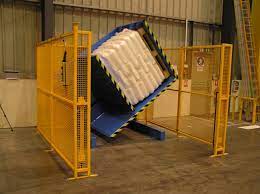
This isn't just about swapping one pallet for another. It's a fundamental upgrade to your logistics and packaging workflow. It is a strategic step that directly addresses the challenges of compliance, cost control, and digitalization that leaders in the Mexican steel industry face every day. I've spent my career in the packing machine industry, first as an engineer and now as a factory owner. I understand that every piece of equipment must be more than just a machine; it must be a solution that delivers tangible value. Let's break down how an automated pallet exchange system does exactly that.
How Can Automated Pallet Exchange Systems Address Mexico's Border Compliance?
Your trucks are loaded and ready to go, but you get a call from the border. A shipment is being held because the pallets aren't properly stamped according to ISPM 15 regulations. Now, you face a logistical nightmare. You might have to pay for the shipment to be returned, manually re-palletize the entire load under difficult conditions, and deal with an angry customer waiting for their delivery. This isn't just an inconvenience; it's a direct hit to your bottom line and your company's reliability, a constant worry for any business involved in cross-border trade with Mexico. An automated pallet exchanger eliminates this entire category of risk.
An automated pallet exchange system directly addresses border compliance by making the switch to certified pallets a standardized, error-free part of your internal process. It mechanically and safely transfers your goods from an internal "plant use" pallet to a new, fully compliant ISPM 15 heat-treated pallet just before shipping. This automated step ensures that 100% of your export shipments leave your facility on the correct pallets, meeting all international regulations without fail.
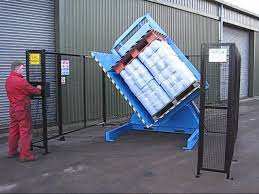
Deeper Dive: From Manual Risk to Automated Certainty
As an engineer, I always look at processes to find points of failure. In logistics, manual pallet handling is a huge one, especially when dealing with strict compliance rules. Let's explore why automation is the superior approach.
The Challenge of ISPM 15
The International Standards for Phytosanitary Measures No. 15 (ISPM 15) is a set of rules created to prevent the spread of pests and diseases through wood packaging materials used in international trade. For a steel mill in Mexico shipping to the US or other countries, this means any solid wood pallet must be debarked, heat-treated (or fumigated with methyl bromide), and stamped with a specific mark of compliance. An inspector at the border only needs to see one pallet without the correct stamp to reject the entire shipment. Relying on manual checks to ensure every single pallet is compliant is risky. People make mistakes, especially in a busy, high-volume environment.
Manual vs. Automated Pallet Exchange
The traditional way to handle this is to have workers manually move steel coils or products from one pallet to another. This manual process is slow, dangerous, and inefficient. An automated system transforms this critical step.
| Feature | Manual Pallet Exchange | Automated Pallet Exchange |
|---|---|---|
| Compliance Certainty | Low. Relies on human inspection. | High. Process is standardized and repeatable. |
| Speed | Slow. 2-3 workers may take 5-10 minutes. | Fast. The cycle can take as little as 60 seconds. |
| Labor Requirement | High. Requires multiple workers and a forklift. | Low. Requires only one supervisor. |
| Product Damage Risk | High. Manual handling can damage products. | Very Low. Gentle clamping secures the load. |
| Worker Safety | Low. Risk of back injuries and accidents. | High. Workers are removed from the process. |
| Process Control | Poor. Inconsistent and hard to track. | Excellent. Integrated into the factory workflow. |
By implementing an automated pallet exchanger, you are not just buying a machine. You are designing a new, more robust process. You create a clear "red line" in your facility. All pallets on one side are for internal use. All pallets on the other side are certified for export. The machine is the gatekeeper, ensuring nothing crosses that line without meeting the required standard. This brings a level of process control and stability that manual methods can never achieve, which is essential for any modern steel operation.
What Are the Key Traceability Benefits of Integrating Pallet Changers?
You get a quality claim from a major automotive client. They need to know the exact production batch of the steel coils they received last Tuesday. You search through shipping manifests and production logs, trying to piece together the information. This process is slow and relies on paperwork that might be incomplete or inaccurate. This lack of clear, real-time data is a major liability. It makes recalls difficult, complicates quality control, and undermines your efforts to build a truly digital, transparent factory. A modern pallet changer, when properly integrated, solves this problem by becoming a powerful data collection point in your supply chain.
By integrating directly with your Manufacturing Execution System (MES) or Warehouse Management System (WMS), an automated pallet exchanger provides robust, end-to-end traceability. As the machine swaps the pallet, it uses scanners to read the barcode or RFID tag on your product. It then links this product ID with the unique ID of the new, compliant export pallet. This action creates a permanent digital record, capturing the "who, what, when, and where" of your product's final packaging step, making every shipment fully traceable.
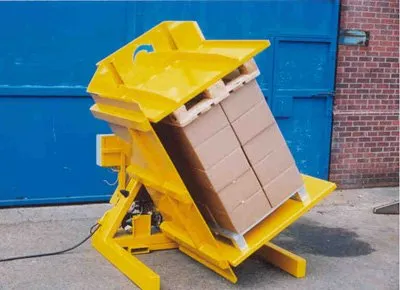
Deeper Dive: Turning a Mechanical Process into a Data Goldmine
From my experience building a successful factory, I learned that the most valuable assets are often not the machines themselves, but the data they generate. A pallet exchanger is a perfect example of this principle. It performs a physical task, but its true power is unlocked when it starts talking to your other systems.
How Integration Creates Traceability
The integration process is straightforward for a good engineering partner. The pallet exchanger's control system (the PLC) is connected to your central factory network. Here's how the data flows:
- Product Arrival: The palletized load arrives at the exchanger. A scanner reads the barcode or RFID tag on the steel coil or product bundle. This tag contains the unique product ID from your MES.
- Pallet Swap: The machine performs the exchange, placing the load onto a new, export-compliant pallet.
- New Pallet Association: Another scanner reads the unique ID on the new pallet.
- Data Transmission: The pallet exchanger's PLC sends a complete data package to your MES/WMS. This package links the Product ID to the New Pallet ID and adds a timestamp.
This creates an unbreakable digital chain of custody.
Fueling Your Digital Transformation
For a forward-thinking leader looking to implement MES, IoT, and Big Data, this is incredibly valuable. The pallet exchanger stops being just a piece of handling equipment and becomes an essential IoT sensor on your factory floor.
| Data Captured by Pallet Exchanger | How It's Used in Digital Transformation |
|---|---|
| Product ID | Links packaging data to production and quality data. |
| New Pallet ID | Enables precise tracking through the shipping and logistics chain. |
| Timestamp | Provides exact time of final packaging for process optimization. |
| Weight (if integrated) | Verifies shipment accuracy and ensures compliance with weight limits. |
| Operator ID | Tracks who supervised the process for accountability. |
This data helps you achieve full production visualization. You can see, in real-time, exactly what has been packaged and is ready for shipment. You can answer a customer's traceability query in seconds, not hours. It also provides the clean, reliable data needed for advanced analytics to predict bottlenecks or optimize workflows. This is how you build a smarter, more resilient factory.
How Does Automation in Pallet Handling Impact Operational Costs and ROI?
As a factory owner, I live by the numbers. You look at your profit and loss statement, and you see costs that are hard to control, like energy prices. But you also see costs that you can control, like labor, product damage, and inefficiencies in your workflow. Manually handling heavy steel products for pallet exchange is a major source of these controllable costs. It requires multiple workers, risks expensive product damage, and creates a bottleneck that slows down your entire shipping department. These costs add up, eating directly into your profit margins day after day.
Automating your pallet handling process with an exchange system delivers a powerful and direct return on investment (ROI). It immediately reduces your direct labor costs by reassigning workers to more valuable tasks. It virtually eliminates product damage during the transfer process, saving you from costly write-offs. And it dramatically increases your throughput, allowing you to ship more products in less time with fewer resources. The financial case is not just compelling; it's a clear path to a more profitable operation.
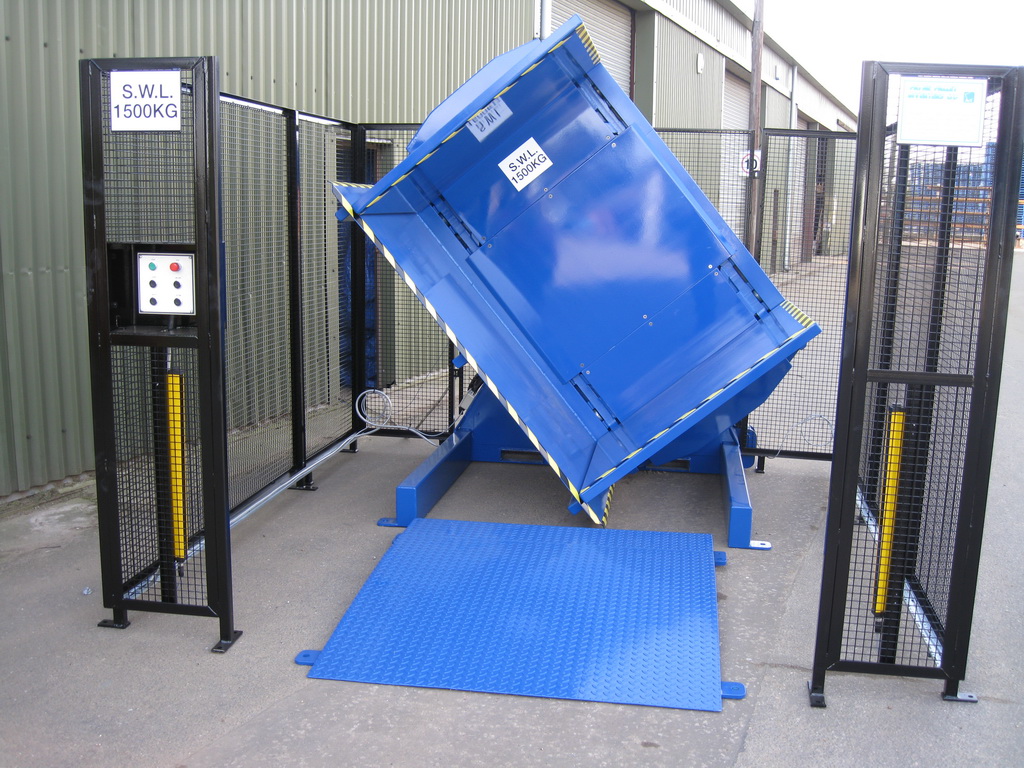
Deeper Dive: A Practical Look at the Financials
When I started my own factory, every investment had to be justified with a strict financial analysis. An automated pallet exchanger is an investment that pays for itself through multiple streams of cost savings and efficiency gains. Let's break down the numbers in a way that would be useful for a feasibility analysis at a steel mill.
Calculating the Return on Investment (ROI)
The ROI comes from several key areas. We can compare the ongoing costs of a manual process to the one-time investment and minimal running costs of an automated one.
| Cost Center | Manual Pallet Exchange (Annual Cost Estimate) | Automated Pallet Exchange (Annual Cost Estimate) | Annual Savings |
|---|---|---|---|
| Direct Labor | 2 workers x 8 hours/day x $10/hour x 250 days = $40,000 | 1 supervisor (10% of time) x 8 hours/day x $15/hour x 250 days = $3,000 | $37,000 |
| Product Damage | 1% damage rate on $5M of product = $50,000 | Damage rate reduced to 0.1% = $5,000 | $45,000 |
| Forklift Operations | 1 dedicated forklift: fuel, maintenance, operator = $20,000 | Forklift use reduced by 80% = $4,000 | $16,000 |
| Workplace Safety | Higher insurance premiums, potential injury claims = $5,000 (Variable) | Lower risk, reduced premiums = $1,000 | $4,000 |
| Total Annual Savings | $102,000 |
Note: These are illustrative figures. The actual savings would depend on your specific labor costs, product value, and operational volume.
If a heavy-duty pallet exchanger costs, for example, $150,000, the simple payback period in this scenario would be less than 18 months.
Meeting Strategic Financial Goals
This analysis directly supports the high-level goals of a steel mill CEO. A goal to lower overall operating costs by 8% is ambitious. The savings from this single piece of equipment can represent a significant portion of that target. Furthermore, by increasing the speed of the packaging line, you directly contribute to the goal of increasing capacity utilization. When the end of the line moves faster, it pulls work from the rest of the factory, helping to debottleneck the entire system and get closer to that 95% effective run-time goal. This is a strategic investment in profitability.
What Should You Look for in a Pallet Exchange Partner for Your Steel Mill?
You've done the analysis and you're convinced that an automated pallet exchanger is the right move for your steel mill. But when you start searching for suppliers, you're faced with dozens of options. They all have websites with impressive videos, but how do you know which machine can handle the brutal environment of a steel plant? Choosing the wrong supplier is a huge risk. You could end up with a machine that breaks down under the weight of your steel coils, a control system that won't talk to your MES, or a partner that disappears after the installation is complete. You are not just buying a machine; you are investing in a critical part of your production line.
You need to look for a strategic partner, not just a supplier. A true partner will have proven, deep experience in heavy-duty industrial applications like steel. They must have the engineering capability to customize a solution for your specific layout and products. And most importantly, they must be committed to providing comprehensive, full-lifecycle support, from the initial design all the way through years of reliable operation. They should understand your business, not just their machine.
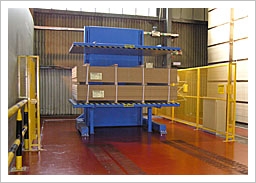
Deeper Dive: A Checklist for Choosing the Right Partner
As someone who has been on both sides—buying equipment as an engineer and selling it as a factory owner—I know what separates a good supplier from a great partner. A great partner helps you succeed. Here are the critical things I would look for if I were in your position.
Proven Expertise in Heavy-Duty Applications
A steel mill is not a food processing plant. Your products are heavy, dense, and often have concentrated loads.
- Load Capacity: Ask for proof that their machines can handle not just the static weight of your heaviest pallet load, but the dynamic forces involved in tilting or clamping it. A machine rated for 2,000 kg should be truly robust.
- Construction: Look at the steel thickness, the quality of the welds, and the size of the hydraulic or electric components. It should look and feel over-engineered, because in a steel mill, it needs to be.
- Clamping System: For products like steel coils, the clamping system is critical. It must be powerful enough to secure the load without damaging the product. Ask for case studies or references from other companies in the metals industry.
Customization and Integration Capability
Your factory layout is unique. A standard, off-the-shelf machine is rarely a perfect fit.
- Engineering Team: Does the partner have an in-house engineering team that can design a solution for you? They should be asking you for drawings of your plant layout and details about your product flow.
- Integration Experience: This is non-negotiable. Ask them specifically about their experience integrating with MES and WMS platforms like SAP, Oracle, or custom-built systems. They should speak fluently about PLCs, communication protocols, and data exchange. This is essential for meeting your digitalization goals.
Full Lifecycle Support
The relationship should not end when the machine is installed.
- Installation and Training: A good partner will send their own technicians to manage the installation and commissioning. They will also provide thorough training for both your operators and your maintenance staff.
- Spare Parts and Maintenance: How quickly can they provide critical spare parts to Mexico? Do they offer preventative maintenance plans? A machine that is down for weeks waiting for a part is a failed investment.
- A Shared Engineering Mindset: You want a partner whose engineers can talk to your engineers. When I founded SHJLPACK, I built it on this principle. We are engineers helping other engineers solve problems. This shared background creates a much more collaborative and effective partnership.
My Insights
When I hear about the journey of a leader like Javier Morales—starting on the factory floor and rising to own a major steel mill—I feel a strong connection. My own path, from a young engineer in a packing machine factory to building my own successful company, was filled with similar challenges and opportunities. I learned firsthand that success in this industry isn't just about hard work; it's about making smart, strategic decisions, especially when it comes to technology. I achieved financial independence because I learned how to make machines work for the business, not the other way around. Now, my mission with SHJLPACK is to share that knowledge.
The reason I am so passionate about equipment like automated pallet exchangers is that I see them as powerful enablers. This machine is not just a solution for swapping pallets. It is a tool that unlocks progress on multiple fronts, directly addressing the core challenges a modern steel mill owner in Mexico faces.
It enables Compliance. By automating the process, it removes the human error that leads to border rejections, fines, and delays. It turns a major source of risk into a reliable, predictable part of your operation, opening up international markets with confidence.
It enables Data. In the age of digital transformation, data is the new oil. This machine becomes a critical data-gathering point on your factory floor, feeding your MES and WMS with the clean, accurate information you need to achieve total production visibility and make smarter business decisions.
It enables Efficiency and Profitability. By reducing labor costs, eliminating product damage, and increasing throughput, it provides a clear and rapid return on investment. It helps you lower your operating costs and increase your capacity utilization, making your business more resilient against market and cost fluctuations.
Ultimately, a strategic investment in automation is an investment in the future of your company. It is about building a more efficient, more intelligent, and more profitable operation. My goal is not just to sell a machine, but to be a partner in that journey, sharing my experience to help you achieve your goals.
Conclusion
Automated pallet exchange is a strategic investment. It solves compliance, enhances traceability, and boosts profitability, securing your position in the competitive cross-border trade market.



